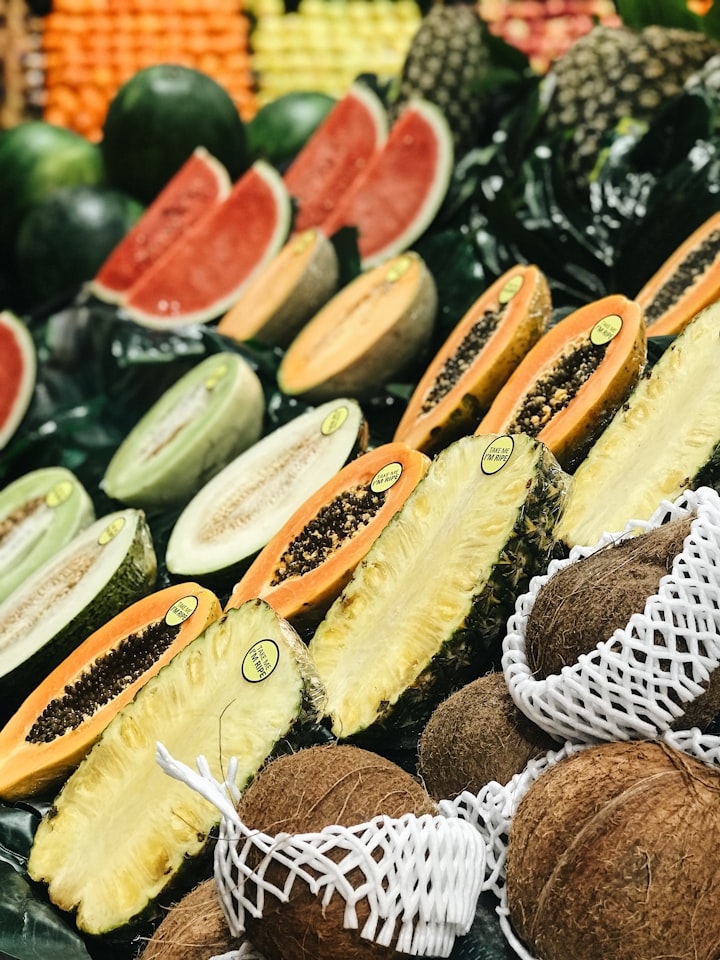
1. Dietary fiber is the only nutrient that affects the gut microbiota.
While dietary fiber usually receives the most attention, simple sugars, fats, and proteins also modulate the gut microbiome. For example, fructose prevents gut colonization of Bacteroides thetaiotaomicron, a species known to ferment fiber from fruits, vegetables, and beans and contribute to maintenance of a healthy weight.
Because proteins are rich in nitrogen, high-protein diets can lead to bacterial overgrowth in a manner akin to eutrophication, whereby fertilizer runoff that spills into ponds and lakes increases nitrogen and phosphorus concentrations, leading to algal blooms. Even vitamin D supplementation tweaks our gut microflora by increasing gut microbial diversity, including levels of health-promoting Akkermansia and Bifidobacterium.
As Eugene Rosenberg and Ilana Zilber-Rosenberg expertly summarize in a Microbiome review article:
Food, food additives, and essentially any material that is put in the mouth affects the gut microbiota at all ages. Both long-term and short-term diet influences the human gut microbiota. An "animal-based diet," rich in meats, eggs, and cheeses increases the abundance of bile-tolerant microorganisms (Alistipes, Bilophila, and Bacteroides), whereas a "plant-based diet," composed of grains, legumes, fruits, and vegetables, increases the levels of Firmicutes that metabolize dietary plant polysaccharides. Not only macronutrients, but also other components that are consumed affect the microbiome, such as red wine, tea and coffee, chocolate, food emulsifiers, artificial sweeteners, and, of course, antibiotics.
2. We can define a healthy "normal" microbiome.
The idea of only one healthy microbiome is a fallacy. While individuals harbor at least 160 individual species in their guts, over 1100 prevalent species have been catalogued among European individuals alone. In other words, there are many different ways to assemble a "good gut."
3. Microbes can be classified as either beneficial or pathogenic.
"Normal" gut microbiota in healthy persons often include potentially pathogenic bacteria such as E. coli and Enterococci. The "African enigma" refers to the paradoxical high prevalence of H. pylori in populations which are generally not afflicted by gastrointestinal cancer. Moreover, the same bacteria which are commensal in the gut can trigger deadly sepsis if allowed to enter the bloodstream.
4. You need X bacteria in order to be healthy.
Claims regarding the necessity of certain gut bacteria ignore the functional redundancy inherent in gut microbial communities. Usually, many microbes can perform the same function. That is, Oxalobacter formigenes certainly degrades oxalate, but so do several strains of Bifidobacterium lactis, Lactobacillus gasseri, and Eubacterium lentum.
Similarly, bacteria belonging to the genera Butyricicoccus, Roseburia, and Faecalibacterium are capable of synthesizing butyrate. This built-in redundancy means that the lack of one particular strain or species doesn't necessarily spell metabolic doom for the host.
5. Antibiotic resistance is a modern phenomenon.
Since both fungi and some bacteria manufacture antibiotics in order to kill their competition, antibiotic resistance is actually an ancient phenomenon. Analysis of bacterial DNA recovered from 30,000-year-old Belgian permafrost has revealed genes that encode for resistance to β-lactam, tetracycline and glycopeptide antibiotics. Many clinical antibiotics are naturally derived from fungal species, e.g. penicillin is produced by the mold Penicillium.
6. Probiotics can restore your gut microflora after antibiotics.
The overwhelming majority of commercially available probiotic supplements have not been investigated for effectiveness. First, the types and quantities of bacteria present in probiotic supplements do not represent the native human gut microbiota. As previously mentioned, the diversity of human gut microflora encompasses more than 1,000 different species while commercial probiotics usually contain less than 10 species.
Second, the bacteria found in probiotics are generally not native to the human gut and therefore fail to colonize. Since most are derived from dairy, the human gut is not a natural environment for these organisms. Some research even suggests that the use of probiotics after antibiotics can delay the return of the microbiome to baseline, including the return of butyrate-producing species.
When New York Times journalist Michael Pollan asked microbiome research experts about their use of probiotics, most replied that they do not take them but instead focus on a whole-foods based approach that incorporates prebiotics, dietary components believed to feed populations of beneficial gut microbes.
About the Creator
Nita Jain
Researcher, podcaster, scicommer | nitajain.substack.com






Comments
There are no comments for this story
Be the first to respond and start the conversation.